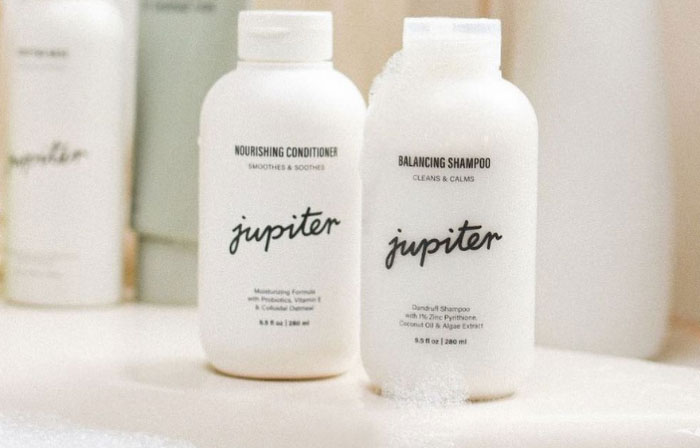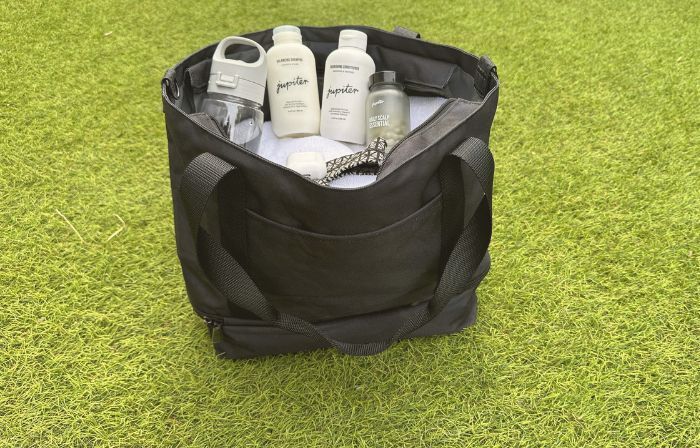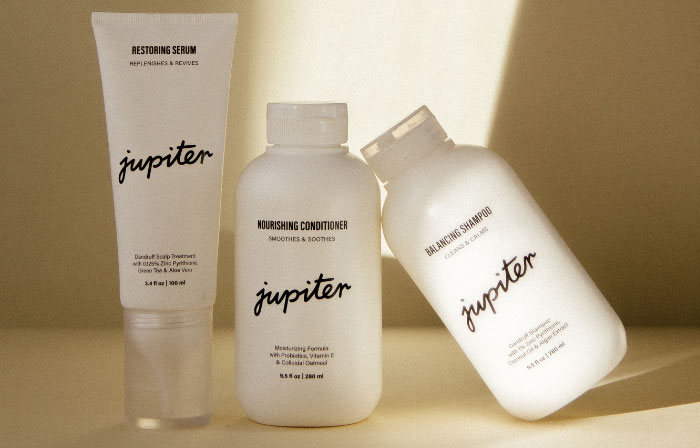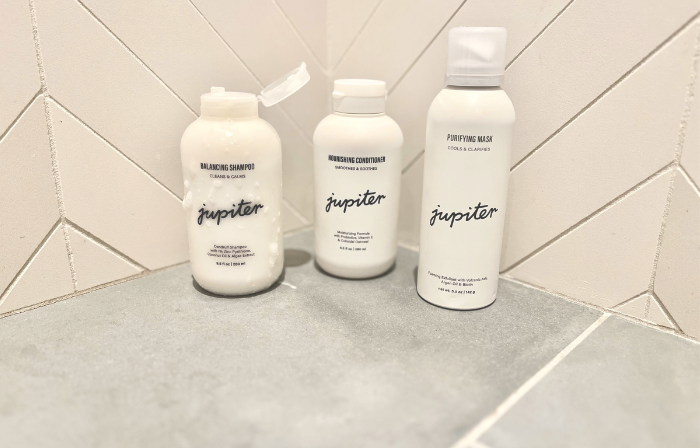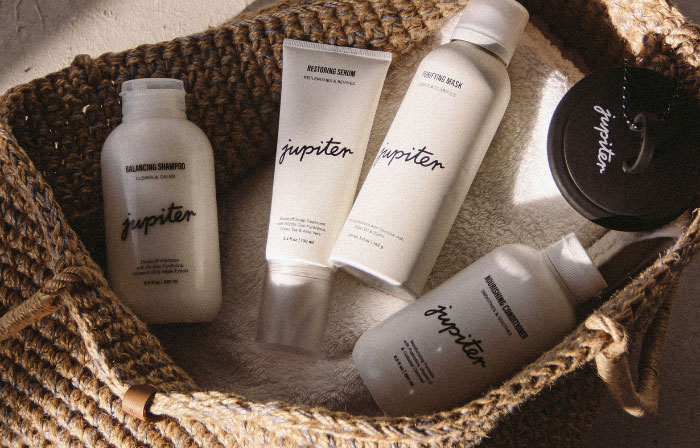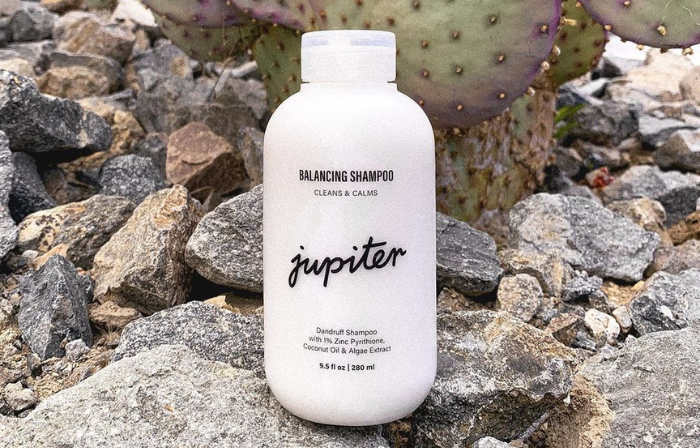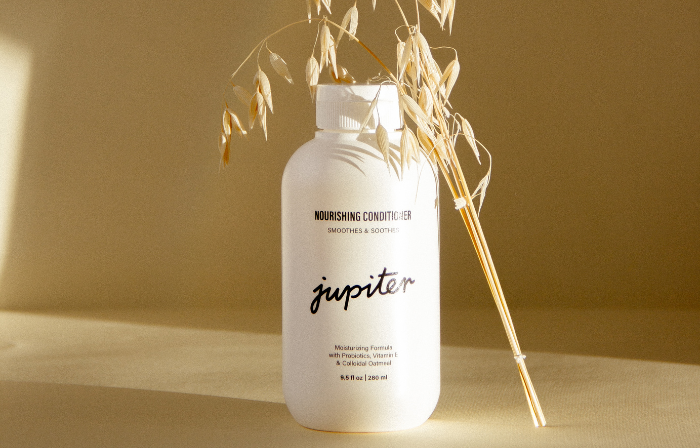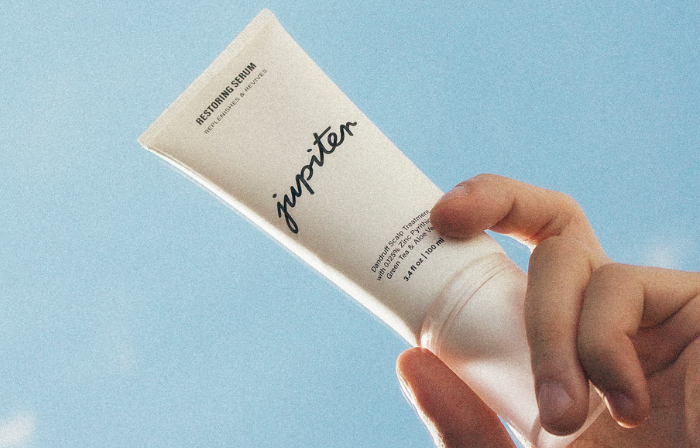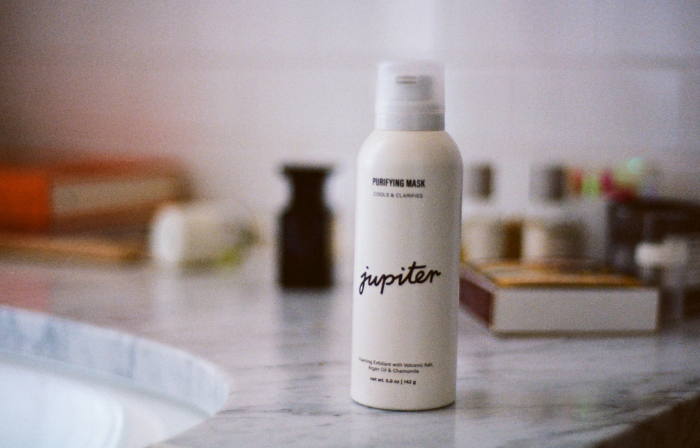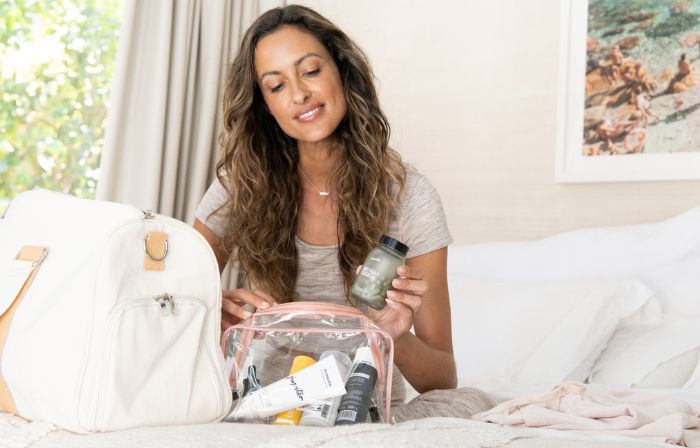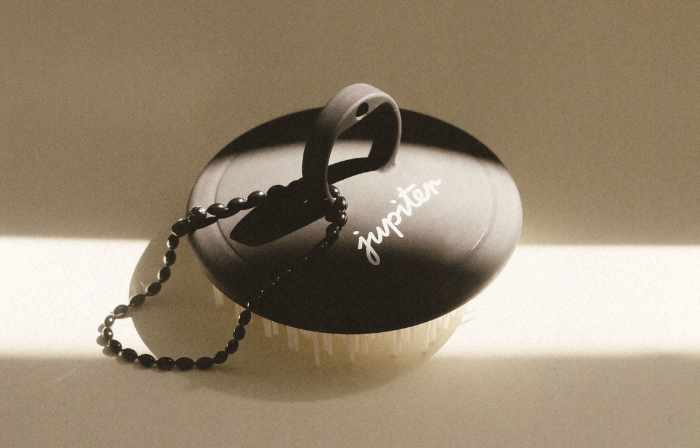Did you know that your skin and hair require a certain amount of natural oils to remain healthy? It’s true. Your skin and hair need oils to keep the hair follicles healthy and prevent moisture loss, leading to a dry scalp.
Let’s dive deeper into the facts on scalp sebum buildup and what that means.
What Is Sebum?
Sebum is another word for oil. The sebaceous glands on your scalp and body produce this oil through a process of programmed cell death called holocrine secretion. Sebocyte cells dissolve and release sebum into the sebaceous glands, where they travel through the follicular duct to the skin and then out through hair growth.
Sebum has antimicrobial properties, which means it stops the growth of certain organisms. It also contains lipids, triglycerides, fatty acids, wax esters, and squalene.
Sebaceous glands are located all over the body, but they densely populate the scalp, upper body, and face. Although oil is essential, its overproduction also has the potential to cause problems.
For instance, when excess oil is produced on the face and clogs the pores, it causes acne and blackheads.
What Causes Sebum Buildup on the Scalp?
Sebum production requires careful balance. If there is not enough of it, your hair and scalp become dry, irritated, and flaky. Too much sebum leads to irritating sebum buildup on the scalp, resulting in oily strands and potential hair thinning.
Most sebum buildup on the scalp results from the over-accumulation of sweat, oil, dead skin cells, and product buildup.
Essentially, when these things become “stuck” to the scalp, it causes buildup. This buildup can cause waxy flakes to appear on the scalp. These flakes resemble scalp conditions such as psoriasis, seborrheic dermatitis, dandruff, and eczema.
Here are a few basic causes of sebum buildup on the scalp:
Scalp Hygiene: People with oily hair and an oily scalp should wash their hair frequently with a mild balancing shampoo. Harsher shampoos with chemical ingredients like sulfates will strip the hair of its natural oils. This stripping will cause brittleness and rough-textured strands.
Hormones: Excess production of oils in the scalp occurs when hormone levels rise and fall. There are many reasons why hormones fluctuate and attribute to excessive sebum production, including pregnancy and menopause.
Androgenetic Alopecia: Androgenetic Alopecia (AGA) is triggered by natural hormones in the human body, and it's the most common type of hair loss. Hair miniaturization causes the hair follicles to shrink in size, allowing the sebaceous glands to take over the remaining space left by the now smaller hair follicles. Excessive oil is produced here and may lead to excess sebum buildup.
Diet: A diet high in fats, oils, and processed foods directly affect hair and scalp. Overproduction of oils occurs, leading to scalp follicle inflammation and scalp buildup.
Can Sebum Buildup Cause Hair Loss?
Sebum buildup doesn’t directly lead to hair loss. However, it does contribute to dandruff and a scalp imbalance in some people. scalp conditions to consider when it comes to hair fall are:
Dandruff, often caused by Malassezia is a type of common fungi, or yeast, found on the skin. An overgrowth of this fungus can lead to dandruff and scalp discomfort. If left untreated, it will cause damage to the hair follicle, and hair loss may occur.
Seborrheic Dermatitis is a more severe form of dadnruff. This condition causes inflammation in the areas where many sebum glands are located, including the scalp. Genetics, medications, stress, and weakened immune systems are causes of this condition. Itching and inflammation of the follicle area may result in the loosening of the hair, causing hair fall.
Most sebum buildup on the scalp results from the over-accumulation of sweat, oil, dead skin cells, and product buildup.
Ways to Prevent or Reduce Sebum Buildup?
It is possible to prevent excessive sebum buildup. Sebum activity varies per individual based on sebaceous gland activity. Here are a few tips you can try to reduce excess sebum on your scalp.
Improve Your Diet
According to a study performed in 2019, diet really does matter when it comes to sebum production and pH in the body. Research of dietary patterns resulted in findings showing a diet rich in meats, dairy, sugar, and processed foods resulted in higher sebum levels in individuals.
Replace these foods with healthier alternatives such as nuts, fruits, and whole grains.
Practice Healthy Hair Care
Balance is key when it comes to hair care. Over-washing your hair will strip your hair of its natural oils, while not shampooing enough will lead to sebum buildup.
Check out Jupiter’s Balancing Shampoo. Our soothing anti-dandruff shampoo contains Zinc Pyrithione which helps control dandruff and oil production on the scalp, and it’s proven to reduce hair breakage by 30%.
Wash your hair 3-4 times per week by massaging the shampoo into the scalp and throughout the length of your hair.
Avoid Harsh Chemicals & Hair Care Products
Haircare products with harsh chemicals and synthetic fragrances will strip away the oils that your scalp needs to remain healthy and moisturized. Avoiding these ingredients in your hair care products will support a healthy scalp and prevent scalp irritation, flakes, redness, and swelling.
Clarify Your Mane
Hair oils, pomades, foams, and gels will produce product buildup if used excessively. Reducing the use of these products is a simple way to prevent scalp buildup. If you choose to use them, though, treat your scalp to a vacation, and the all important scalp-exfoliation, with the Jupiter Purifying Mask.
The foaming clarifying mask leaves your scalp squeaky clean and free of dead skin and buildup.
Air Dry When Possible
Allow your hair to air dry often, rather than using a blow dryer. Hot air dries out the scalp and stimulates oil production in the hair follicles. It may also lead to split ends and brittleness.
Try washing your hair at night and allowing it to dry naturally as you sleep.
Ask a Dermatologist
Follow your dermatologist or doctor’s recommendations for your individual scalp health needs. Dermatologists can help identify skin-specific conditions and recommend tailored treatment plans.
Try a Scalp Brush
Exfoliating scalp brushes are designed to remove buildup from products, sebum, and flakes. Jupiter’s Scalp Brush can be used on a dry scalp to loosen buildup and flaking, and in the shower with shampoo to help lather and massage the scalp.
Scalp brushes also support healthy blood flow and circulation to the scalp, and regular use leads to a cleaner scalp and thicker, healthier-looking hair (not to mention it feels great!).
How to Treat Sebum Buildup on The Scalp
Sebum buildup is best treated with regular use of a gentle cleansing shampoo.
Our Balancing Shampoo is formulated with Zinc Pyrithione which has antimicrobial, antifungal, and antibacterial properties. This star active ingredient helps to keep your scalp in balance thanks and is paired with ingredients like squalance and coconut oil to keep your scalp cleansed and calm. Our Restoring Serum is also formulated with Zinc Pyrithione for a leave on treatment that controls oil production on the scalp between washes.
Conclusion
Sebum is necessary for maintaining a healthy scalp and lustrous hair. However, overproduction of oil may cause uncomfortable scalp buildup and flakes. Buildup of sebum is an incredibly common condition, and it is easily prevented and resolved with the correct hair care products.
Jupiter products are scientifically formulated to make your hair and scalp feel and look its best. Find the scalp care routine that works for you and leaves your scalp cleansed, refreshed, and balanced by taking our quiz. And remember, good hair starts at the scalp.
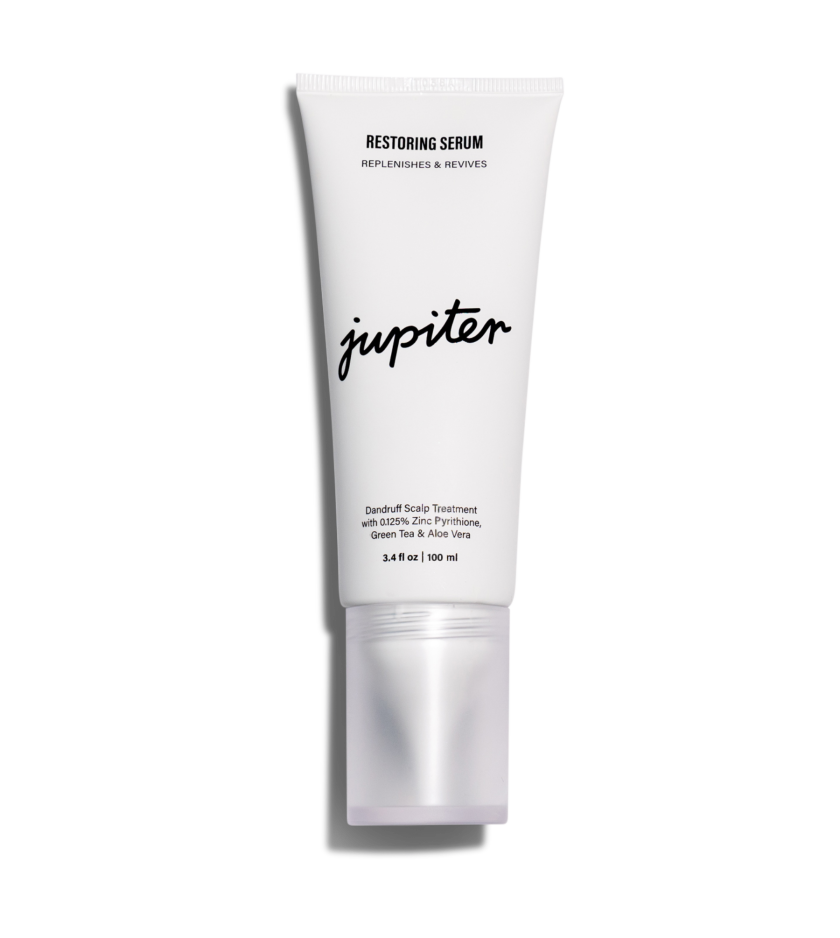
Your scalp savior outside of the shower. Our Restoring Serum is best for those with oily scalps, more severe flaking or wash their hair less frequently. Apply this medicated leave-in (active ingredient Zinc Pyrithione) directly to the scalp in between washes to relieve and control itching, flaking, and redness.
